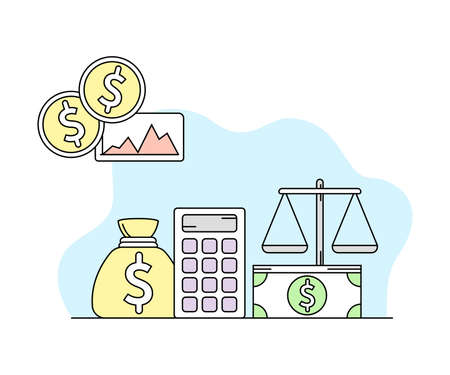1. Understanding FDIC Insurance
What Is FDIC Insurance?
If you’ve ever opened a savings or checking account at a U.S. bank, you’ve probably seen the phrase “Member FDIC.” But what does that actually mean for your money? FDIC insurance is protection for your deposits if your bank fails. The Federal Deposit Insurance Corporation (FDIC) is an independent agency of the United States government created to keep your money safe and maintain public confidence in the financial system.
The History of FDIC Insurance
The FDIC was established in 1933 during the Great Depression—a time when many banks were closing and people lost their savings overnight. To restore trust in the banking system, Congress created the FDIC to insure bank deposits. Since then, no depositor has lost a single penny of insured funds due to a bank failure. This makes FDIC insurance one of the most reliable safety nets for your hard-earned cash.
How Does FDIC Insurance Protect Your Deposits?
FDIC insurance covers up to $250,000 per depositor, per insured bank, for each account ownership category. That means if your bank goes out of business, the federal government guarantees you’ll get your insured money back—usually within a few days.
FDIC Coverage at a Glance
| Account Type | Covered by FDIC? | Coverage Limit |
|---|---|---|
| Checking Accounts | Yes | $250,000 per depositor, per bank |
| Savings Accounts | Yes | $250,000 per depositor, per bank |
| Money Market Deposit Accounts | Yes | $250,000 per depositor, per bank |
| Certificates of Deposit (CDs) | Yes | $250,000 per depositor, per bank |
| Stocks, Bonds, Mutual Funds | No | N/A |
| Annuities & Life Insurance Policies (even if bought at a bank) | No | N/A |
Quick Tips for Maximizing Your FDIC Coverage:
- If you have more than $250,000 to deposit, consider spreading your money across different banks or account ownership categories (like individual and joint accounts) to increase coverage.
- Always confirm that your bank is FDIC-insured—you can look for the official FDIC sign or check on the FDIC website’s BankFind tool.
- Remember: Investment products like stocks and mutual funds are not covered by FDIC insurance—even if purchased through an FDIC-insured bank.
2. How FDIC Coverage Works
Understanding how FDIC insurance works is key to making sure your money is truly safe in a high-yield savings account. The Federal Deposit Insurance Corporation (FDIC) is a government agency that protects depositors against the loss of their insured deposits if an FDIC-insured bank fails. Here’s what you need to know about coverage limits, types of accounts that are protected, and tips for maximizing your insured funds.
FDIC Coverage Limits
The standard FDIC insurance amount is $250,000 per depositor, per insured bank, for each account ownership category. This means that if you have $250,000 or less in your name at one insured bank, your money is completely protected by the FDIC.
FDIC Insurance Coverage Table
| Ownership Category | Coverage Limit per Bank |
|---|---|
| Single Accounts (owned by one person) | $250,000 |
| Joint Accounts (two or more people) | $250,000 per co-owner |
| Retirement Accounts (IRA, etc.) | $250,000 |
| Trust Accounts | $250,000 per beneficiary (subject to rules) |
| Business Accounts | $250,000 per business entity |
Types of Accounts That Are Insured
Most deposit accounts at FDIC-insured banks are covered, including:
- Savings accounts (including high-yield savings)
- Checking accounts
- Money market deposit accounts (not to be confused with money market mutual funds)
- Certificates of deposit (CDs)
- Certain retirement accounts like IRAs held at banks
Note: Investment products such as stocks, bonds, mutual funds, crypto assets, life insurance policies, and annuities are not covered by FDIC insurance—even if you bought them through your bank.
How to Maximize Your Protected Assets
If you have more than $250,000 to save, you can increase your total FDIC coverage by:
- Using Different Account Ownership Categories: For example, you can have $250,000 in a single account and another $250,000 in a joint account at the same bank and both will be fully insured.
- Opening Accounts at Multiple Banks: The $250,000 limit applies per bank, so spreading large balances across several FDIC-insured banks will maximize your protection.
- Titling Trust or Retirement Accounts Properly: Make sure the beneficiaries and titles are set up according to FDIC rules for full coverage.

3. What is a High-Yield Savings Account?
When it comes to keeping your money safe and growing, a high-yield savings account is one of the smartest options available today. But what exactly is a high-yield savings account, and how does it differ from the traditional savings accounts offered by most banks? Let’s break it down in simple terms.
Understanding High-Yield Savings Accounts
A high-yield savings account is just like a regular savings account but with one key difference: it offers a much higher interest rate on your deposits. This means your money earns more over time, helping you reach your financial goals faster. These accounts are typically offered by online banks, credit unions, and sometimes even large national banks.
High-Yield vs. Traditional Savings Accounts
| Feature | High-Yield Savings Account | Traditional Savings Account |
|---|---|---|
| Interest Rate (APY) | Often 4% or higher (as of 2024) | Usually below 1% |
| Minimum Balance Requirement | Low or none | Varies, sometimes higher |
| Access | Mainly online/mobile banking | Online and branch access |
| Fees | Generally low or none | May have maintenance fees |
| FDIC Insurance* | Yes (up to $250,000 per depositor per bank) | Yes (up to $250,000 per depositor per bank) |
*FDIC insurance means your money is protected up to $250,000 if the bank fails.
Current Trends in the U.S. Banking Market
The rise of online banking has made high-yield savings accounts more accessible than ever before. Many Americans are switching from brick-and-mortar banks to online-only institutions because they want better returns without sacrificing security. Thanks to lower overhead costs, online banks can offer significantly higher interest rates than traditional banks. This trend has made high-yield savings accounts one of the most popular ways for people to save safely while earning more.
Key Takeaway: Safety and Growth Together
If you’re looking for a place where your money is not only safe—thanks to FDIC insurance—but also grows faster through higher interest rates, a high-yield savings account could be a great fit for your financial needs.
4. Benefits of High-Yield Savings Accounts
When it comes to keeping your money safe and growing, high-yield savings accounts are a popular choice among American savers. These accounts offer several key advantages that make them stand out from traditional savings options, especially when paired with FDIC insurance. Let’s explore why high-yield savings accounts could be the right fit for your financial goals.
Higher Interest Rates
One of the biggest benefits of high-yield savings accounts is the higher interest rate they offer compared to standard savings accounts at most brick-and-mortar banks. This means your money earns more just by sitting in the account, helping you reach your savings goals faster. Many online banks and credit unions in the U.S. provide these elevated rates because they have lower operating costs.
| Account Type | Average Annual Percentage Yield (APY) |
|---|---|
| Traditional Savings Account | 0.01% – 0.10% |
| High-Yield Savings Account | 3.00% – 5.00% |
Liquidity: Easy Access to Your Money
High-yield savings accounts allow you to access your funds quickly whenever you need them. Unlike certificates of deposit (CDs) or some investment accounts, you don’t have to lock up your money for months or years. Most high-yield accounts let you make withdrawals or transfers online, through a mobile app, or even at ATMs without hassle.
How Liquidity Works for Savers
- No penalties: Withdraw funds anytime without early withdrawal fees.
- Online access: Manage your account 24/7 from anywhere in the U.S.
- Linked accounts: Easily transfer money between your checking and savings.
Simplicity and Convenience
Opening a high-yield savings account is straightforward—most can be set up online in minutes. American savers appreciate how easy it is to track their balance, set up automatic deposits, and monitor growth using digital tools provided by banks and credit unions. Plus, many high-yield accounts come with no monthly maintenance fees or minimum balance requirements, making them accessible for everyone.
Quick Comparison: Traditional vs. High-Yield Savings Accounts
| Feature | Traditional Savings | High-Yield Savings |
|---|---|---|
| Interest Rate | Low (0.01-0.10%) | High (3-5%) |
| FDIC Insurance* | Yes | Yes |
| Online Management | Often Limited | User-Friendly Apps/Websites |
| Minimum Balance Requirement | $100+ often required | $0-$100 (many options) |
| No Monthly Fees? | No (fees common) | Yes (often no fees) |
*Coverage up to $250,000 per depositor, per insured bank, as provided by the FDIC.
If you want both safety and solid returns for your cash, a high-yield savings account backed by FDIC insurance gives you peace of mind while helping your money grow faster than it would in a traditional account.
5. Tips for Ensuring Both Safety and Growth
Why FDIC Insurance Matters
When choosing a savings account, the first thing to check is whether it’s FDIC-insured. The Federal Deposit Insurance Corporation (FDIC) protects your money up to $250,000 per depositor, per insured bank, for each account ownership category. This means if your bank fails, your money stays safe. Always look for “Member FDIC” on a bank’s website or branch before opening an account.
How to Find a High-Yield Savings Account
Not all savings accounts are created equal. High-yield savings accounts offer much better interest rates than traditional ones, which helps your money grow faster without sacrificing security. Many online banks in the U.S. offer higher APYs because they have lower overhead costs.
Comparing Savings Options
| Account Type | FDIC Insured? | Typical APY (Annual Percentage Yield) | Pros | Cons |
|---|---|---|---|---|
| Traditional Savings Account | Yes | 0.01% – 0.10% | Easy access, brick-and-mortar support | Low interest rates |
| High-Yield Online Savings Account | Yes | 3.00% – 5.00% | Higher returns, FDIC protection | No in-person branches, may need online banking comfort |
| Certain Money Market Accounts | Yes (if at a bank) | Varies, often competitive with high-yield savings | Check-writing privileges, debit card access | May have higher minimum balance requirements |
Smart Steps for Balancing Security and Growth
- Confirm FDIC Coverage: Double-check the bank’s FDIC status and keep individual accounts below the $250,000 insurance limit for maximum protection.
- Compare Rates Regularly: Interest rates can change over time. Review your account’s APY every few months and don’t hesitate to switch banks if you find a better rate.
- Avoid Fees: Choose accounts that don’t charge monthly maintenance fees or require high minimum balances.
- Diversify If Needed: If you have more than $250,000 to save, consider spreading funds across multiple FDIC-insured banks or account categories.
- Piggyback With Other Tools: Some banks allow you to link high-yield savings with checking accounts for easy transfers and even better management of your funds.
Your Next Move
The right FDIC-insured high-yield savings account lets you enjoy peace of mind while watching your savings grow. Take a few minutes to compare options online, confirm insurance coverage, and pay attention to the fine print—your financial future will thank you.


